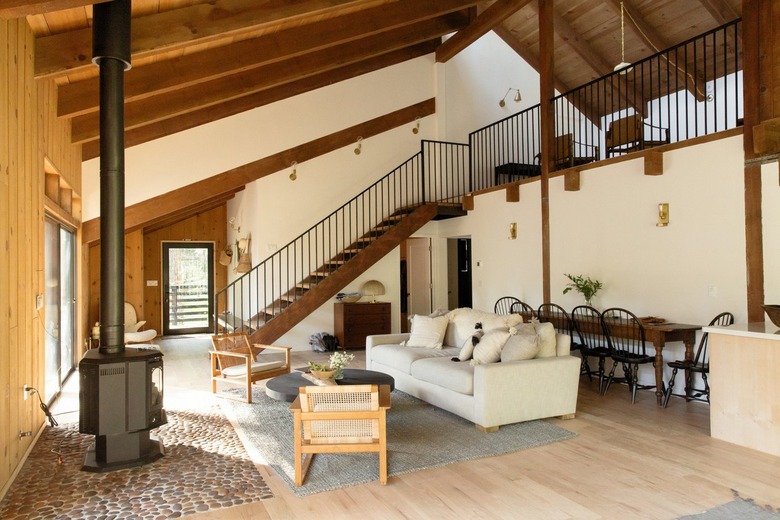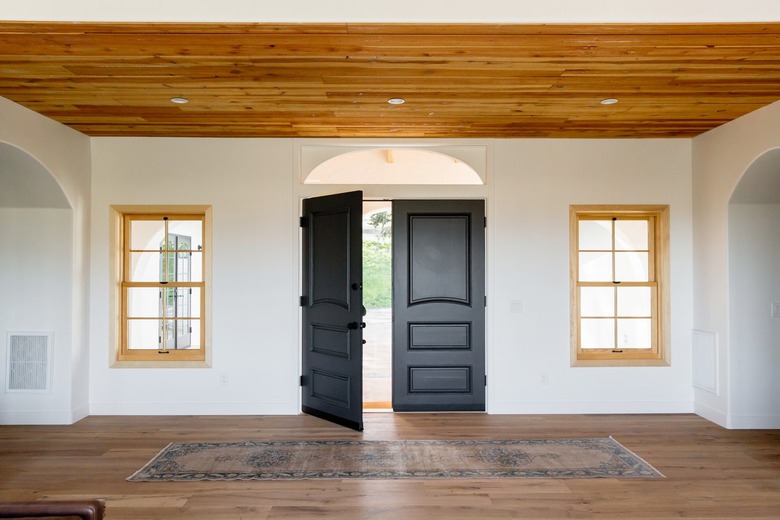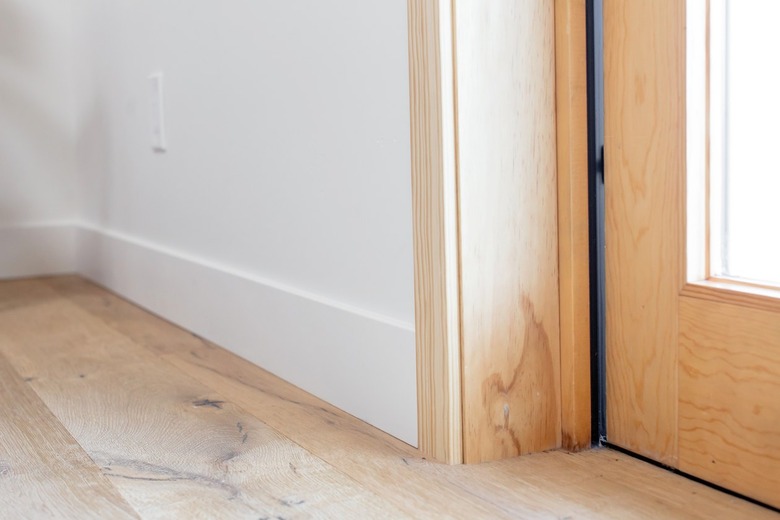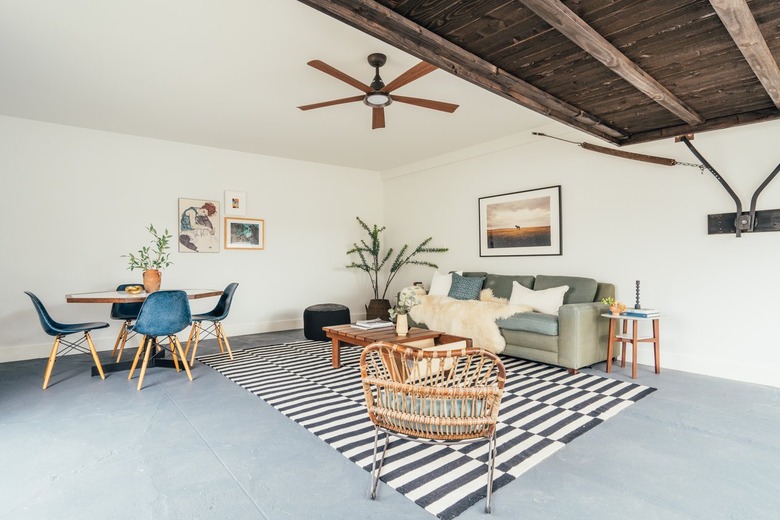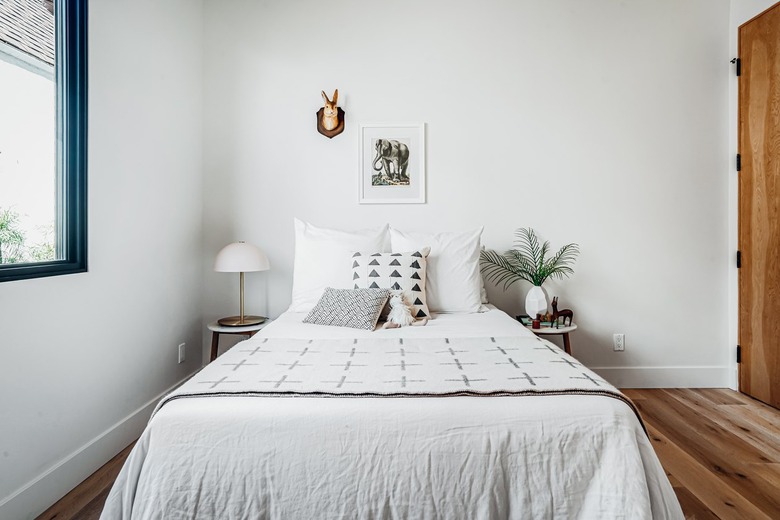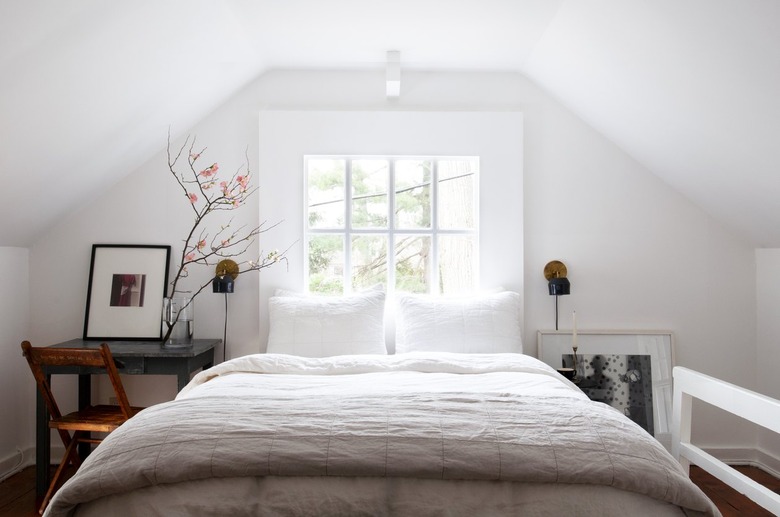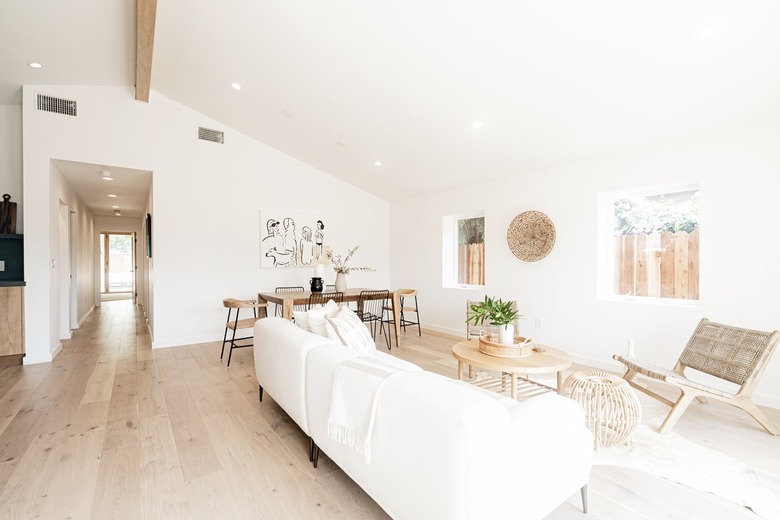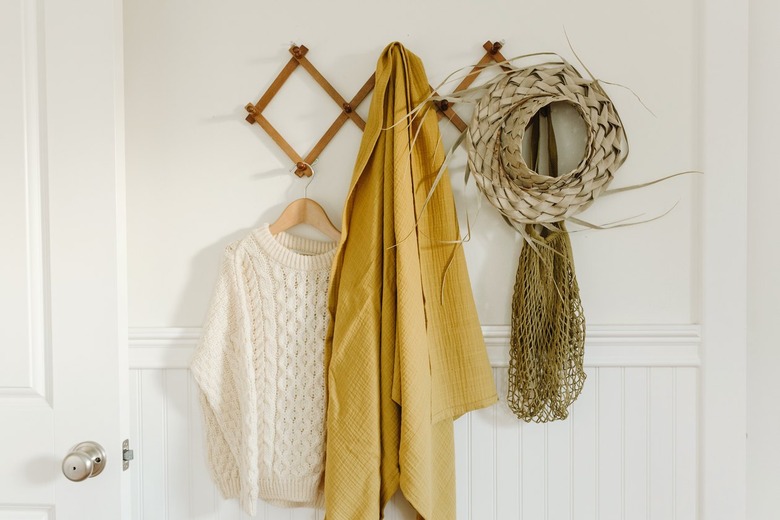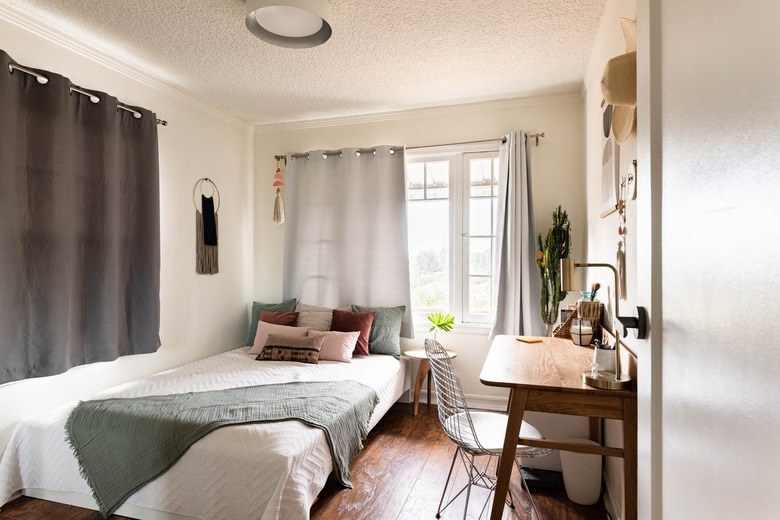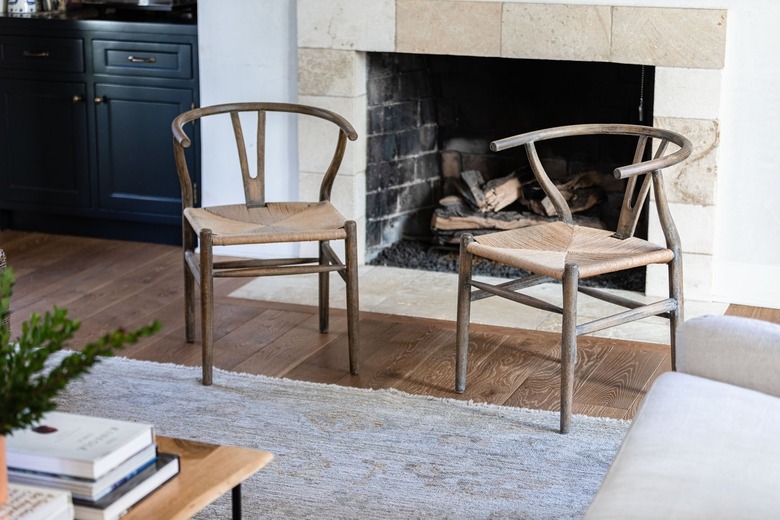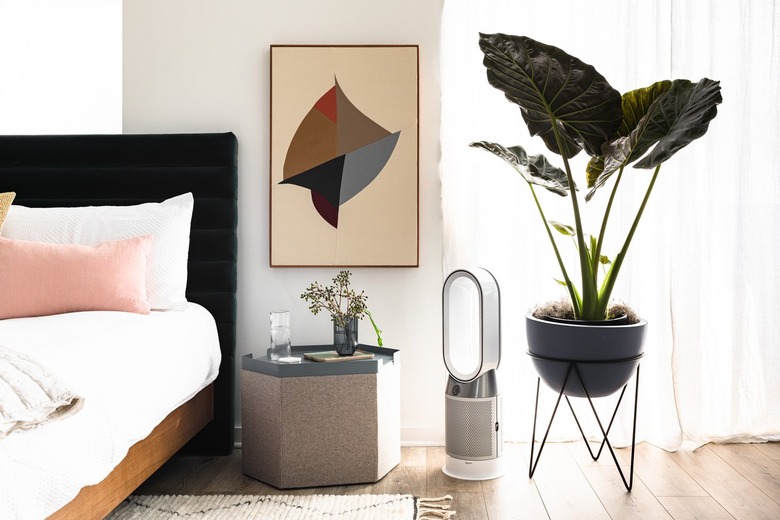How To Make A Room Warmer: 12 Winter Heating Tips
We may receive a commission on purchases made from links.
During the winter, Jack Frost isn't just nipping at your nose. He's nipping at your windows. And doors, bringing cold air into the entire house. While you likely have central heating in your home, sometimes, it just doesn't get warm enough. There's also the cost of heating your home, resulting in a utility bill that breaks the bank every winter.
In fact, in 2019, the American Gas Association reported that American households spend an average of $661 a year on natural gas to heat their homes. In addition, heat loss can be a very real thing, even in the most airtight homes. That translates to dollars spent on a gas bill flying out your windows and doors. So, how do you keep every room in your house feeling toasty when faced with high gas bills and heat loss?
As it turns out, there are some creative hacks that can actually make a big difference when it comes to trapping heat and making your home feel warmer. For example, even though a space heater is considered a last-ditch effort (it can raise your electric bill, only heat small rooms, and can even be a fire hazard), it will give your heating system (and gas bill) a little break.
Here are 12 ingenious ideas that can actually make a big difference when it comes to trapping heat and making your home feel warmer.
12 Ways to Warm Up a Room
1. Use draft stoppers.
Draft stoppers, placed under doors and often made of foam, are an extremely economical way to warm up a cold room. This type of weather stripping can be used to close cracks that allow heat to escape and cold air to come inside. Some draft stoppers can be used on the windows as well. And bonus: Door and window draft stoppers are readily available at most home improvement stores or major online retailers such as Amazon. Say goodbye to that pesky cold draft.
2. Close up any and all visible cracks.
You may have some drywall cracks throughout your home that are oftentimes caused by seasonal changes in the first place. Unfortunately, cold air can find its way into your home through all of these tiny nooks and crannies. But not to worry. You can repair the cracks yourself with the help of a little putty. Or hire a professional if the work is substantial.
3. Reverse the direction of your ceiling fan.
Have you ever heard of reversing the direction of your ceiling fan to make a room warmer? It's a tried-and-true trick! By changing the direction, ceiling fans can circulate warm air in a room. You can either switch the direction with the provided remote or simply flip the reverse switch on the motor. According to The Home Depot, a fan's direction for winter should be clockwise and run on the lowest speed. The clockwise rotation will pull the cool air upward and bring down the warm air from the ceiling.
4. Buy soft and cozy blankets.
'Tis the season to stock up on tons of blankets for your home. Be sure to drape them over the sofa in your living room and across your bed as well. The warmest blanket materials include wool, fleece, and cashmere. And if all else fails, you can always add a water bottle filled with hot water to the bottom of the blanket you're currently snuggling with.
5. Consider a heated blanket for your bed.
Standard blankets can always keep you toasty, but have you thought about an electric blanket for your bed? According to mattress company Land of Sleep, using a heated blanket can save energy and cut down on heating costs. In addition to keeping you warm, a heated blanket can help relieve some aches and pains, too. Just keep in mind that it's not a very pet-friendly option.
6. Or purchase a bed heater.
If you want to keep the thermostat turned down at night, but you don't want to freeze during the winter, consider a sleep system for your bed. These systems, which are fairly new to the market, can actually heat the bed. And in the summer, they can also keep your bed cool. But be forewarned that they are an investment — for example, ChiliSleep's sleep system can cost as much as $719.
7. Insulate your walls.
Do you live in an old home that's never been properly insulated (hello, newspaper in the walls!)? Or do you live in a warm climate, and your home isn't insulated, but you wish it was? Well, the good news is that with the help of professionals, that's actually possible. However, be prepared to spend a nice chunk of change to warm up your home — according to HomeAdvisor, insulating a home can cost between $1,400 and $6,300.
8. Put rugs on the floor.
If you thought an area rug was strictly for aesthetic purposes, think again. Long before there were radiators, rugs were used as a way to warm up a cold room and save energy. Rugs are particularly key when covering up non-carpeted floors, like laminate, tile, wood, and concrete. And you can create even more warmth if you layer multiple rugs on top of one another.
9. Bundle up with warm clothes.
For a no-brainer way to stay warm in your home, simply bust out your winter wardrobe. Start with fleece-lined leggings or flannel shirts, then follow with socks and slippers. Pretty much anything made from warm and cozy materials such as wool, fleece, cashmere, and nylon will do the trick since they all retain heat very well.
10. Cover the windows with heavy curtains.
Windows can easily invite cold air into your spaces, but one way to contend with this draftiness is to cover your windows with extra-heavy curtains. When shopping for room-warming drapery, you'll want to keep your eye out for the word "thermal." Purchase window treatments that go from the floor to the ceiling, and make sure they fit snugly on either side of the window or extend beyond it. Skip breezy materials like linen and light cotton in favor of heavier fabrics, like velvet or tweed.
11. Invest in a fireplace.
A fireplace is an extremely effective way to warm up any room. If you don't have the time, patience, or budget to install a real-deal fireplace, nowadays, you can purchase an electric fireplace. But if you want to save energy (that electric fireplace will translate to a higher electric bill, after all), you may want to consider carving out space for a traditional wood-burning fireplace. HomeAdvisor reports that the average cost of installing a gas, masonry, or wood-burning fireplace can run between $1,900 and $5,600.
12. Consider a space heater.
As a last-ditch effort, you can always plug in a space heater, like the Dyson Purifier Hot + Cool, to warm up your room. But keep in mind that like most things in life they come with both pros and cons. While space heaters will save you money on your gas bill, they need to run constantly in order to deliver continuous heat, they're not great at warming large rooms, and they can present a fire hazard. Carefully weigh the advantages and disadvantages before opting for this solution.
